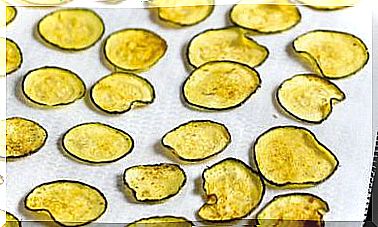Why Are Whole Grains Better?
Whole grains are known to be healthy for providing more fiber, vitamins and minerals than refined ones. Its consumption helps prevent cholesterol, diabetes and being overweight.

Cereals provide 55% of the energy and 50% of the proteins consumed in total by humans worldwide. They are an excellent source of carbohydrates, fiber and proteins, and are rich in B vitamins, vitamin E and a large number of minerals, mainly magnesium, phosphorus, iron and zinc.
Whole grains or not: what is the difference
The contributions, however, vary depending on whether it is whole or refined cereals, since in refined cereals the nutrients decrease significantly when the germ and bran are extracted.
Whole grains also have numerous phytochemicals, such as phytoestrogens and antioxidants. All this keeps the debate on the advisability of consuming these staple foods in one way or another, especially when consumption goes in the opposite direction to nutritional and health criteria.
The benefits of whole grains
While markets remain fertile ground for refined grains, much scientific evidence supports the interest in whole grains. For more than a decade, different studies have concluded that, as cardiovascular prevention, whole grains and derivatives should be included in the diet, understanding whole grain as the whole or ground grain with the germ, bran and endosperm.
- Some components of whole grains are credited with the ability to lower LDL (the “bad”) cholesterol, including soluble fiber, beta-glucans, and alpha-tocopherol.
- It has also been suggested that, thanks to its antioxidant phytonutrients, its consumption can inhibit oxidative stress and inflammation, both cardiac risk factors.
- Other studies associate them with a lower risk of type 2 diabetes : whole grains tend to have a low glycemic index due to their richness in fiber, so they are digested and assimilated more slowly.
- On the other hand, regular consumption of whole grains contributes to maintaining a healthy weight, due to its lower energy density and its satiating effect.
- The regulation of intestinal transit is another reason to bet on them.
And there is also an intangible quality: the whole grain is alive, it can germinate and give rise to a new plant, while the refined one can already be considered inert matter.
Is it worth consuming only whole grains and avoiding refined ones?
In case you still have questions, we answer some of the most frequently asked questions about whole grains and refined cereals.
- Is whole grain more nutritious?
Yes. Taking wheat as an example, there are three times the total minerals in whole wheat, and specifically, three times more zinc, iron and selenium.
A vitamin with a risk of deficiency, folic acid, is in quantities five times higher, as is the case with vitamin B6. And in the case of fiber, it drops from 13 to 3%.
- What other advantages do whole grains have?
The germ and bran of cereals not only contain most of the essential nutrients but also oligosaccharides, lignans, phytic acid, tannins, phenolic acid and flavonoids, among other antioxidant compounds. Hence the impact of its elimination when the cereal is refined.
- How do cereals affect glucose levels?
Knowing the amount of glucose that reaches the blood after eating carbohydrate foods and the speed with which it does so is essential in nutrition. Concepts like glycemic index and glycemic load take care of this. Available data indicate lower values for whole grains and derivatives.
- Is it advisable to eat cereals daily?
Cereals are a staple food, and one of the first sources of starch, the carbohydrate recommended as the main source of energy. They can be consumed, therefore, daily and, in general, better whole than refined. In addition, they can be part of both breakfast and lunch or dinner.
- Why is the germ so good?
It is the innermost part of the grain and from which a new plant can sprout. It contains proportionally more proteins and numerous vitamins, especially E and some of group B.
In addition, it contains essential polyunsaturated fatty acids, phytonutrients with antioxidant power, and minerals such as magnesium, phosphorus, iron, zinc and copper.
- Are refined cereals more caloric?
For every 100 grams, white rice, raw, has about 20 calories more than brown rice, and white bread, about 30 more than brown. If, for example, you eat 250 grams of bread a day, this represents a difference of 75 calories between one option and another.
- When is a totally whole wheat bread?
A totally integral bread would be the one made with a flour of a degree of extraction 100, or what is the same, the result of grinding the cereal grains without eliminating anything. A different thing are the breads made with flours of a lesser degree of extraction to which ingredients such as bran are added later.
- How do you know if a bread is truly wholemeal?
Authentic whole wheat bread has a strong and slightly acidic aroma, but it is pleasant; its bark, thick and dark, and the crumb, brown, more or less dark and uniform.
If it has been fermented with natural yeast, you can barely distinguish the bran, which becomes soft. The crumb’s eyes are uneven.
To learn more, read this other article on tricks to distinguish a good whole wheat bread from a fake one.
- Is it convenient to vary from whole grains?
Since there is no complete food that provides all the nutrients you need, variety is a golden rule in any healthy diet. Wheat and rice are the most consumed cereals, but it is highly recommended to take others such as oats, rye, barley, corn and millet, available in different presentations.
- Can they be contraindicated?
Yes. In situations where, for different reasons, a diet low in fiber is indicated . The sensitive digestive tubes of children invite the utmost caution and consultation with the pediatrician. Personal tolerance must also be taken into account. If they are not usually consumed, it is recommended to introduce them progressively.
You may also like…
14 cereals that enrich your diet, by Mercedes Blasco.
How to make sourdough bread at home, by Luciano Villar.
Mayra Paterson’s Best For Your Heart Ancient Cereal Breads.









